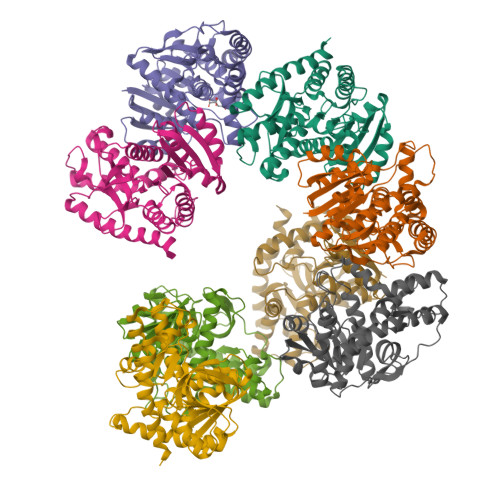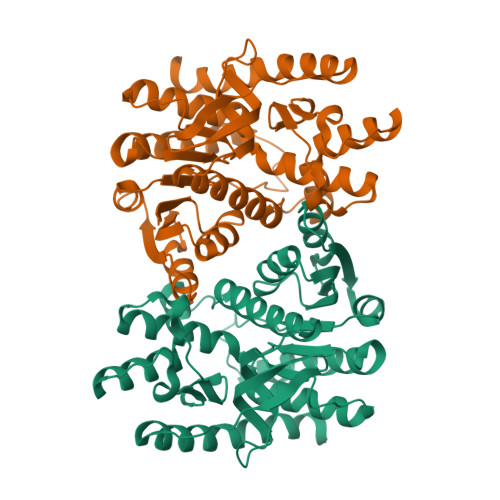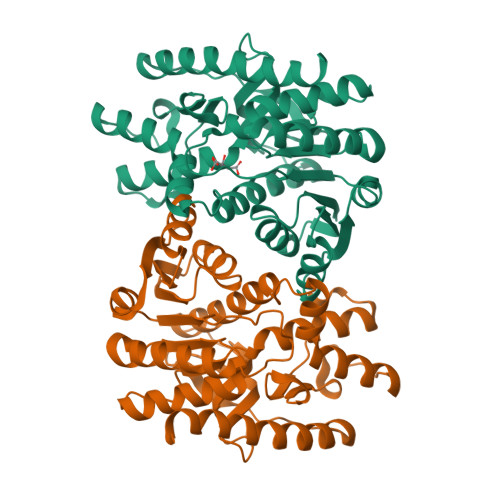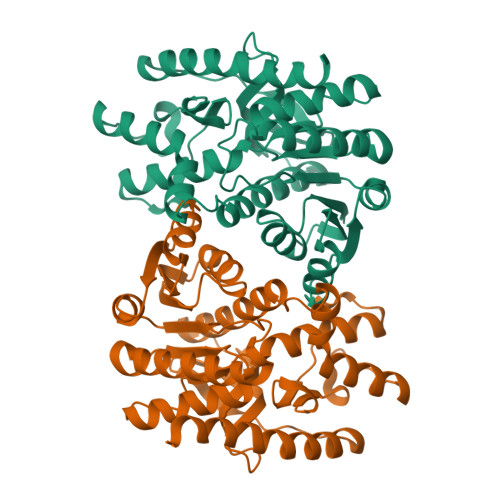Organelle and translocatable forms of glyoxysomal malate dehydrogenase. The effect of the N-terminal presequence.
Cox, B., Chit, M.M., Weaver, T., Gietl, C., Bailey, J., Bell, E., Banaszak, L.(2005) FEBS J 272: 643-654
- PubMed: 15670147
- DOI: https://doi.org/10.1111/j.1742-4658.2004.04475.x
- Primary Citation of Related Structures:
1SEV, 1SMK - PubMed Abstract:
Many organelle enzymes coded for by nuclear genes have N-terminal sequences, which directs them into the organelle (precursor) and are removed upon import (mature). The experiments described below characterize the differences between the precursor and mature forms of watermelon glyoxysomal malate dehydrogenase. Using recombinant protein methods, the precursor (p-gMDH) and mature (gMDH) forms were purified to homogeneity using Ni2+-NTA affinity chromatography. Gel filtration and dynamic light scattering have shown both gMDH and p-gMDH to be dimers in solution with p-gMDH having a correspondingly higher molecular weight. p-gMDH also exhibited a smaller translational diffusion coefficient (D(t)) at temperatures between 4 and 32 degrees C resulting from the extra amino acids on the N-terminal. Differential scanning calorimetry described marked differences in the unfolding properties of the two proteins with p-gMDH showing additional temperature dependent transitions. In addition, some differences were found in the steady state kinetic constants and the pH dependence of the K(m) for oxaloacetate. Both the organelle-precursor and the mature form of this glyoxysomal enzyme were crystallized under identical conditions. The crystal structure of p-gMDH, the first structure of a cleavable and translocatable protein, was solved to a resolution of 2.55 A. GMDH is the first glyoxysomal MDH structure and was solved to a resolution of 2.50 A. A comparison of the two structures shows that there are few visible tertiary or quaternary structural differences between corresponding elements of p-gMDH, gMDH and other MDHs. Maps from both the mature and translocatable proteins lack significant electron density prior to G44. While no portion of the translocation sequences from either monomer in the biological dimer was visible, all of the other solution properties indicated measurable effects of the additional residues at the N-terminal.
Organizational Affiliation:
Department of Biochemistry, Molecular Biology and Biophysics, University of Minnesota, MN, USA.






















